Hello amazing teachers!
Are you looking for a fun and engaging way to bring history to life for your students? Meet Sabaton, a Swedish heavy metal band known for their powerful songs about historical events. While heavy metal might not be the first thing that comes to mind for a primary school setting, Sabaton’s music is a treasure trove of educational content that can make learning history exciting and memorable for your students.
Let’s explore how you can use Sabaton’s songs to enhance your history lessons.
Who are Sabaton?
Sabaton is a band that combines heavy metal music with historical storytelling. Their songs cover a wide range of historical events, from ancient battles to modern warfare. With their captivating melodies and dramatic lyrics, Sabaton makes history come alive in a way that’s both educational and entertaining.
Why Use Sabaton in Your Classroom?
- Engaging Content: Sabaton’s energetic music can capture students’ attention and make historical events more interesting.
- Storytelling: Each song tells a story, helping students to understand and remember historical events and figures.
- Discussion Starters: The lyrics can serve as a springboard for discussions about the historical context, causes, and consequences of events.
How to Use Sabaton in Your History Lessons
- Song Selection: Choose songs that are age-appropriate and relevant to your curriculum. Some good options include:
- “Bismarck”: The story of the famous German battleship during World War II.
- “Christmas Truce”: About the remarkable events and friendships between allied forces and German troops around the trenches during the Christmas truce in WW I.
- “Aces in Exile”: Highlighting the bravery of foreign pilots in the Battle of Britain.
- “Carolus Rex”: The story of a Swedish king gone quite crazy.
- There are others from Africa, Greek history, and much more.
- Introduce the Historical Context: Before playing the song, give your students a brief overview of the historical event or figure. This will help them understand the lyrics better.
- Listen and Analyse: Play the song for your class and provide the lyrics for them to follow along. After listening, discuss the key points mentioned in the song. Ask questions like:
- What event or person is the song about?
- What emotions or themes are present in the lyrics?
- How does the music reflect the historical event?
- Creative Projects: Encourage your students to engage with the content creatively:
- Drawing: Have them draw scenes inspired by the song’s story.
- Writing: Ask them to write a short essay or a diary entry from the perspective of a historical figure mentioned in the song.
- Role-Playing: Organise a role-playing activity where students act out parts of the historical event.
- Compare and Contrast: Use Sabaton’s songs alongside traditional history lessons, such as OpenSTEM’s HASS materials. Compare the song’s portrayal of events with historical texts and discuss any differences or artistic liberties taken by the band.
Tips for Success
- Preview the Songs: Ensure the content is suitable for your students’ age group and comprehension level.
- Create a Safe Space: Some historical events may be sensitive. Encourage respectful discussions and be prepared to address any tough questions that arise.
- Encourage Curiosity: Let students ask questions and explore topics that interest them further. Use the songs as a gateway to deeper learning.
Using Sabaton’s music in your history lessons can bring a fresh and dynamic approach to teaching. Your students will not only learn about historical events but also develop a greater appreciation for the power of storytelling through music.
So, crank up the volume and let Sabaton help you rock your history lessons!
Resources
- Sabaton Official Website: Sabaton.net
- YouTube Channel: Sabaton’s official YouTube channel has music videos with historical context.
- Lyrics and Discussions: Websites like Genius.com provide lyrics and interpretations of Sabaton’s songs.
Let’s make history unforgettable for our students!

 Are you considering implementing our integrated HASS+Science program, but getting a tad confused by the pricing? Our subscription model didn’t not provide a So nowstraightforward calculation for a whole school or year-level. However, it generally works out to $4.40 (inc.GST) per student. So now we’re providing this as an option directly: implement our integrated HASS+Science program school-wide from just $4.40 per student. Easy!
Are you considering implementing our integrated HASS+Science program, but getting a tad confused by the pricing? Our subscription model didn’t not provide a So nowstraightforward calculation for a whole school or year-level. However, it generally works out to $4.40 (inc.GST) per student. So now we’re providing this as an option directly: implement our integrated HASS+Science program school-wide from just $4.40 per student. Easy!
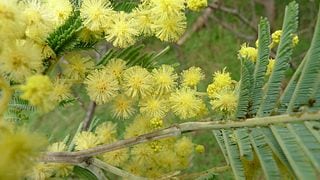
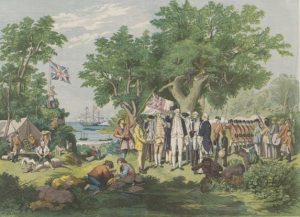 Not strictly speaking within this week, but close enough to be included: it was 22 August, 1770, when James
Not strictly speaking within this week, but close enough to be included: it was 22 August, 1770, when James 
 Global warming and sea level rise are related because a warmer global environment melts the ice at the poles and causes the sea level to rise. The same thing happened at the end of the
Global warming and sea level rise are related because a warmer global environment melts the ice at the poles and causes the sea level to rise. The same thing happened at the end of the  Scenario 1 has us take sudden, urgent action to reduce global warming and greenhouse gas emissions worldwide, as well as putting policies in place to control and reduce human impacts on the poles, and Antarctica in particular (reducing numbers of people in Antarctica, as well as their impact there). The situation 50 years from now (a time scale chosen to reflect the lifetimes of today’s children) has Antarctica enjoying a similar environment to today. The ozone hole has been repaired and the climate remains similar to that of the 20th century. The rate at which the ice has thinned has remained constant, instead of accelerating, and the acidification of the sea water has been kept low. The sea ice has decreased by “only” 12% and the ice on land by “only” 8%. Marine animals and birds show only small declines in population. Antarctica has been protected from invasive plants and animals through decreased human access and impact and maintenance of the harsh climate. Global air temperature has risen by less than 1 degree Celsius. Overall the sea level will rise by just under 1 metre, of which only 6cm comes from melting ice in West Antarctica.
Scenario 1 has us take sudden, urgent action to reduce global warming and greenhouse gas emissions worldwide, as well as putting policies in place to control and reduce human impacts on the poles, and Antarctica in particular (reducing numbers of people in Antarctica, as well as their impact there). The situation 50 years from now (a time scale chosen to reflect the lifetimes of today’s children) has Antarctica enjoying a similar environment to today. The ozone hole has been repaired and the climate remains similar to that of the 20th century. The rate at which the ice has thinned has remained constant, instead of accelerating, and the acidification of the sea water has been kept low. The sea ice has decreased by “only” 12% and the ice on land by “only” 8%. Marine animals and birds show only small declines in population. Antarctica has been protected from invasive plants and animals through decreased human access and impact and maintenance of the harsh climate. Global air temperature has risen by less than 1 degree Celsius. Overall the sea level will rise by just under 1 metre, of which only 6cm comes from melting ice in West Antarctica.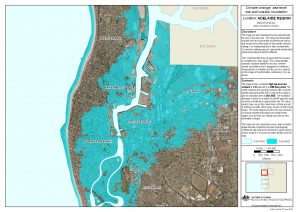

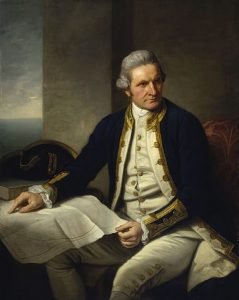
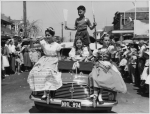 6th June: This year Wednesday 6 June was marked by the opening match of the annual State of Origin rugby league series between the NSW Blues and the Qld Maroons. Whilst rugby league has its own fascinating
6th June: This year Wednesday 6 June was marked by the opening match of the annual State of Origin rugby league series between the NSW Blues and the Qld Maroons. Whilst rugby league has its own fascinating 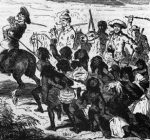 10th June: A more tragic event in Australian history is the
10th June: A more tragic event in Australian history is the  11th June: On this day in 1770,
11th June: On this day in 1770,
The activities embedded in the programs make the subjects more engaging for the students as well as the teacher.
Trent Perry, Teacher